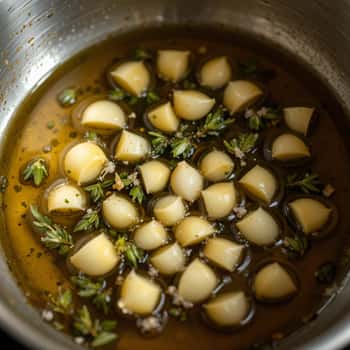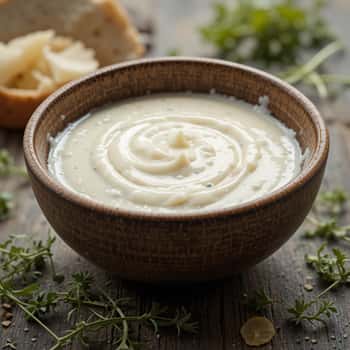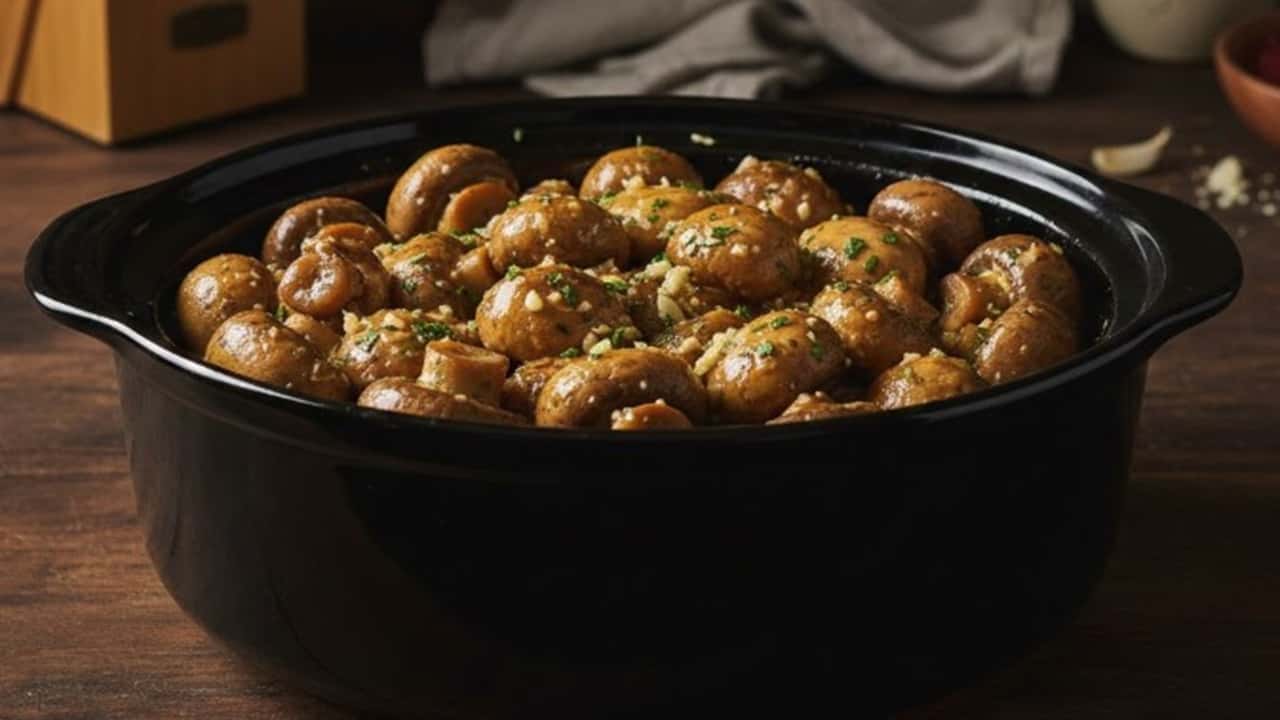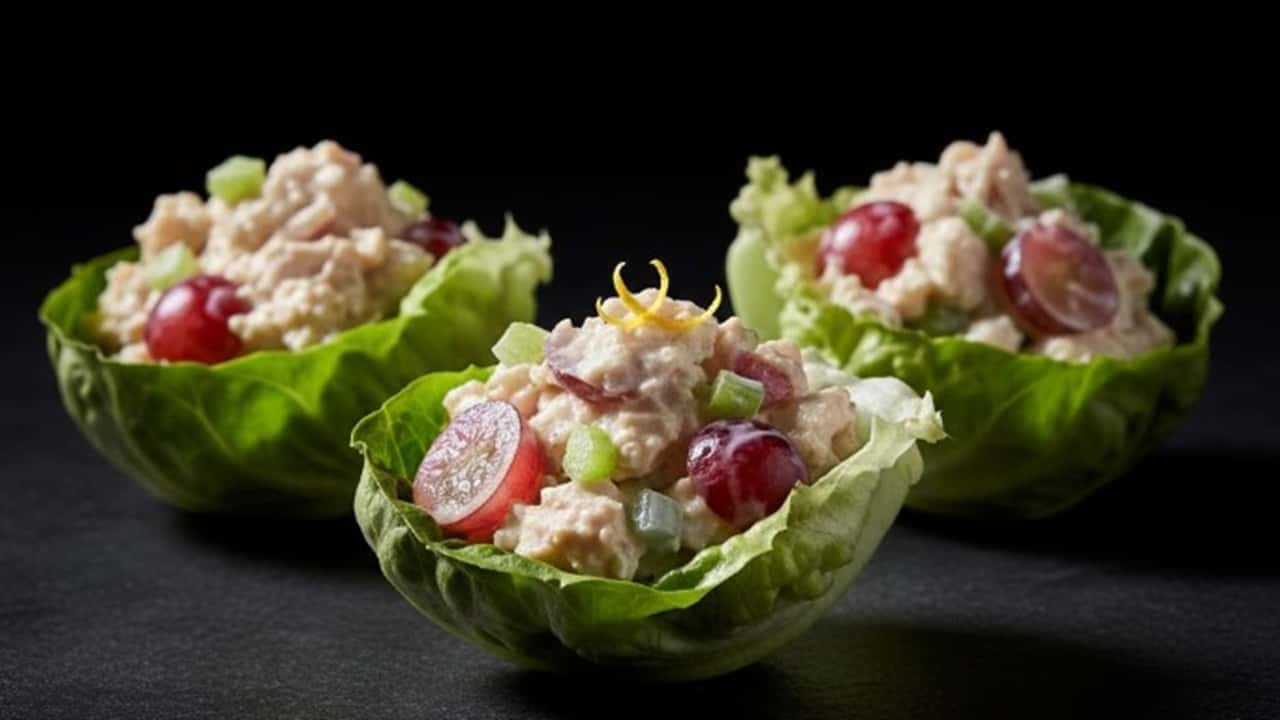Discover how to create a restaurant-worthy Caesar dressing that’s gentle on your digestive system while maintaining that iconic garlicky punch you crave.
Let’s be honest – following a low-FODMAP diet often feels like saying goodbye to your favorite flavors.
As someone who struggled with IBS for years while working in an office prior to becoming passionate towards kitchens, I know firsthand how frustrating it can be to watch others enjoy classic dishes like Caesar salad while you’re stuck with plain greens and olive oil.
But here’s the game-changing secret I discovered: You don’t have to compromise on taste to keep your gut happy.

Today, I’m sharing my revolutionary low-FODMAP Caesar dressing that will transform your salad game forever.
Why This Low-FODMAP Caesar Dressing Recipe Is Different

Traditional Caesar dressing relies heavily on raw garlic, which is a major FODMAP trigger.
Most low-FODMAP versions simply omit the garlic, resulting in a flat, uninspiring dressing that barely resembles the original.
But through countless experiments in my test kitchen, I’ve developed a technique that captures that bold garlic essence without the digestive distress.
The magic lies in properly infusing high-quality olive oil with garlic. I’ve tested dozens of brands, and this Extra Virgin Olive Oil consistently produces the best results thanks to its buttery undertones that complement the garlic perfectly.
Their cold-pressing process preserves the delicate flavors that make this dressing sing.
Choose Your Caesar Dressing Recipe Preferences
Balance Presentation and taste | Prioritize Presentation
Affiliate Disclosure: Kitchen tools and ingredients mentioned in this post have been carefully selected based on years of professional experience. Some links above and within the article are affiliate links, meaning I earn a small commission if you make a purchase. Rest assured, I only suggest or recommend kitchen essentials or things I use and trust in my own kitchen.
The Art of Garlic Infusion
The key to this recipe’s success lies in properly infusing your oil. Here’s my foolproof method:
Ingredients for Garlic-Infused Oil:
- 1 cup high-quality extra virgin olive oil
- About 7 to 8 generously sized garlic cloves, peeled and slightly crushed
- 2 sprigs fresh thyme (optional but recommended)
Infusion Process:

- Begin with room temperature oil for optimal infusion
- Gently crush garlic cloves with the flat side of your knife – this releases the oils without creating small pieces that could contaminate the final product
- In a small saucepan, heat the oil and garlic over very low heat, maintaining a temperature of approximately 180°F/82°C.
- Maintain this temperature for 45 minutes, watching carefully to prevent the garlic from browning
- Remove any solids by slowly pouring the mixture through a fine-mesh strainer nested with cheesecloth
- Allow to cool completely before using
Pro Tip: Make a larger batch of garlic-infused oil – it’s fantastic for other low-FODMAP recipes and will keep for up to two weeks when properly stored in an airtight container in the refrigerator.
The Revolutionary Caesar Dressing Recipe
Ingredients You’ll Need For This Unique Caesar Recipe:

- ½ cup garlic-infused olive oil (prepared as above)
- 2 anchovy fillets (I recommend this Oil-Packed Anchovies)
- 1 large egg yolk, room temperature
- 1 tablespoon Dijon mustard
- 2 tablespoons fresh lemon juice
- 1 teaspoon Worcestershire sauce (verify it’s gluten-free if needed)
- ¼ cup freshly grated Parmigiano-Reggiano
- ¼ teaspoon freshly ground black pepper
- Sea salt to taste
Cooking Method

- Begin by bringing your egg yolk to room temperature – this is crucial for proper emulsion. I separate eggs using this Egg Separator for the cleanest results.
- In your blender, combine:
- Egg yolk
- Dijon mustard
- Anchovy fillets
- Worcestershire sauce
- Lemon juice
- Blend at medium speed for about 30 seconds, the idea is to blend until the mixture is completely smooth.
- Here’s where the magic happens: With the blender running on medium-low speed, slowly drizzle in your garlic-infused oil in a thin, steady stream. This should take about 2-3 minutes. Patience is key – rushing this step will break your emulsion.
- Once all oil is incorporated, add:
- Grated Parmigiano-Reggiano
- Black pepper
- Salt to taste
- Pulse briefly to combine, while doing so aim for a thick, creamy dressing that leaves a generous coating on a spoon.
Storage and Serving Suggestions

Store your dressing in an airtight container (I love these Glass Storage Containers) in the refrigerator for up to 5 days. The dressing will thicken when chilled – let it sit at room temperature for 15 minutes before serving.
Perfect Pairings:
- Crisp romaine lettuce hearts
- Low-FODMAP croutons (recipe coming soon!)
- Additional freshly grated Parmigiano-Reggiano
- Grilled chicken breast
- Seared salmon
Essential Tools for Success
Before we dive into the recipe, let’s ensure you have the right equipment:
- A high-powered blender for the smoothest emulsion (I recommend this Professional Blender it’s my go-to)
- Fine-mesh strainer (I recommend this Double-Mesh Strainer)
- Glass jar for infusing oil
- Airtight storage container
Troubleshooting Tips
If Your Dressing Breaks:
- Add a teaspoon of warm water to a clean blender
- Slowly drizzle in the broken dressing while blending
- Continue blending until emulsified
If Your Dressing Is Too Thick:
- Thin with additional lemon juice or a splash of water, not oil
Health Benefits
This low-FODMAP Caesar dressing isn’t just gut-friendly – it’s packed with nutrients:
- Heart-healthy monounsaturated fats from olive oil
- Protein from egg yolk
- Calcium from Parmigiano-Reggiano
- Omega-3 fatty acids from anchovies
Final Thoughts And Tips For Success
- Temperature matters: Room temperature ingredients emulsify better
- Quality counts: Use the best olive oil you can afford
- Don’t rush the garlic infusion process
- Always taste and adjust seasoning before serving
- Store properly to maintain freshness
Whether you’re following a low-FODMAP diet by necessity or choice, this Caesar dressing proves that dietary restrictions don’t mean sacrificing flavor.
Give it a try, and I guarantee it will become a staple in your kitchen arsenal.





